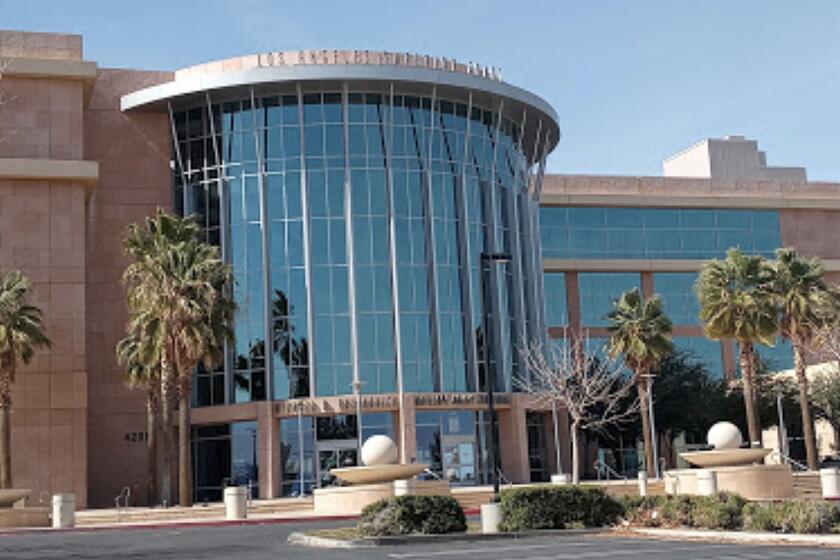More Than Meets Eye
- Share via
The editorial on toxic wastes (“The Battle Line on Toxic Wastes,” July 17) treats this important issue only superficially, ignoring the serious implications for San Diego and other local governments throughout the United States if this order is allowed to stand.
You agree with Judge Judith Keep when she says that this project is mandated by federal law, that the city has lost its authority to require an environmental impact report, and that the city has not properly exercised its land-use prerogatives. And you accuse the City Council of acting in bad faith in attempting to exercise its authority to block the project.
It is well to remember that Ogden, the federal Environmental Protection Agency and the California Department of Health Services should all be viewed as co-applicants. Congress has appropriated billions of dollars for toxic waste cleanup and instructed EPA to develop “innovative” technologies. The state Department of Health Services is being pressured to clean up the state’s dump sites. Neither can possibly approach this proposal with caution or properly regulate it.
Unfortunately, you ignore two crucial points: First, there are legitimate land-use issues at stake, apart from the health and safety issue falling under the jurisdiction of the EPA and the Department of Health Services. Second, the City Council was simply trying to exercise and preserve its traditional authority over these land-use issues.
What are these land use issues? There are at least the following: First, it is a real question whether the incinerator is appropriately zoned for inclusion in a scientific research zone, close to residential development, etc. Second, we need to consider the economic consequences of siting such a controversial project in this location.
Now it is true that the city may not have handled this in the best way possible, but there are extenuating circumstances.
The city was slow to recognize the potential threat; and, as happens very often here, did much in the early stages to accommodate the applicant. With help from the Ogden attorneys, the city facilitated the state becoming the lead agency to review the environmental impacts. Also, the city accepted the amended conditional-use permit specifying the SR zone for this project, that was provided by the applicant.
Later, the City Council seemed not to believe that for a project as potentially damaging to the environment, they could not somehow be provided with an environmental impact report, especially when they are accustomed to seeing environmental review for many projects, most with much less serious implications.
Adequate review by the staff and planning commission was thwarted when Ogden filed suit to force a hearing by the outgoing council because they believed that the previous council was favorable to them. Certainly, this pressure for results contributed to the lack of adequate review.
For the city to have responded appropriately and in the manner that Judge Keep expected would have required a wisdom few city governments possess. Given the council’s distractions with other issues, the aggressiveness of the Ogden attorneys, and the need to grapple with a problem only recently of consequence either in San Diego or throughout the country, the present situation is not surprising.
The major point is: This is a landmark case for land-use regulation by local government. It is precedent-setting, both legally and economically for the city, and it raises major cumulative impact issues on land use, environmental quality and economic development for San Diego that need to be addressed.
Is it too late for us to act? Now what seems obvious is that the city must without delay do whatever is necessary to maintain its land-use powers. It will not be easy.
As a first step, there is perhaps the alternative for the City Council to hold another public hearing where only land-use issues are discussed.
The hearing would allow for the presentation of specific sites where experimental burning could take place in the city--sites far removed from major population centers. Evidence should be presented that the city has been aware of the toxic waste issue and that the city staff has been working with the county for a considerable time to develop in detail a Hazardous Waste Management Plan, including a siting plan. A thorough review of that effort and a time line schedule for its implementation needs to be considered in a public hearing.
Expert advice is urgently needed and efforts to put the city in the strongest possible position are in order. The consequences for the city and potentially for other local governments are enormous and cannot be simply avoided in the manner you suggest.
SUE OXLEY
La Jolla
More to Read
Sign up for Essential California
The most important California stories and recommendations in your inbox every morning.
You may occasionally receive promotional content from the Los Angeles Times.










